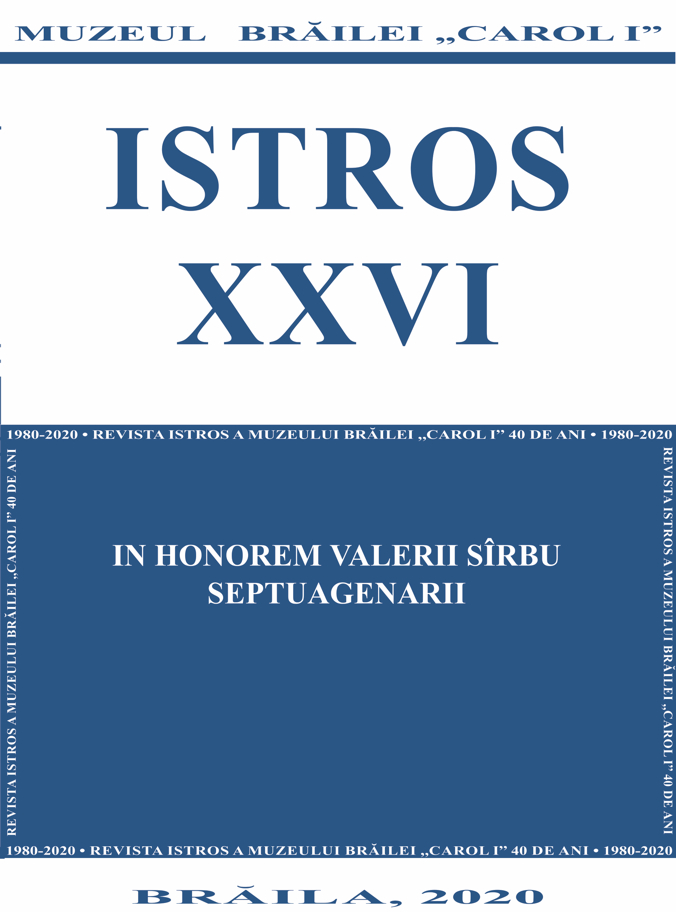Movila arhaică scitică nr. 524 din apropierea localității Zhabotin (situată în marginea din dreapta a Silvostepei Ucrainene)
Scythian Archaic Barrow № 524 near the Village of Zhabotin (Ukrainian Right-Bank Forest Steppe)
Author(s): Sergei A. Skoryi, Roman Zimovets, Vitaliy N. OkatenkoSubject(s): History, Archaeology, Ancient World
Published by: EDITURA ISTROS A MUZEULUI BRĂILEI „CAROL I”
Keywords: Barrow; Early Scythian age; Zhabotin; Tiasmin river-basin;
Summary/Abstract: The first excavations on this barrow were carried out in 1913 by the famous archaeologist Alexei Bobrinsky. The central part of the embankment was excavated by a pit.Under it was found the base of a rather large ground wooden tomb buried in antiquity. The surviving items (weapons, horse equipment, pottery, small gold jewelry) later made it possible to date this embankment by the end of the 7th century BC or by the turn of the 7th -6th centuries BC.Since the late 1980s, there has been a tendency - and, in our opinion, incorrect - of an early dating of the Central Tomb, and, accordingly, of the entire barrow № 524 near the village Zhabotin. It began to date by the turn of the 8th -7th centuries BC, 750-700 years BC, not later than the end of the 8th century BC, and, finally, about the middle of the 8th century BC.In 2019, we performed a full study of the barrow. Information on the Central Tomb, according to a number of features, and first of all - to the sizes, differ from the information published by A. Bobrinsky.The actual dimensions of the tomb are not 35 square meters, but 22 square meters. Two ritual wooden platforms adjoined the Central Tomb from the southeast and northwest. One of them was burned. Burial № 2, covered by wood, was opened next to them. The backbone of a man (14-18 years old) lay on his side, in a very cramped position, without any accompanying inventory. In our opinion, this burial should be considered as a sacrifice to the main noble deceased - a heavily armed Scythian warrior, an equestrian buried in the Central Tomb.A few items from the Central Tomb were also found - bronze plates from the shell, a fragment of an iron sword, but most importantly - a bronze plaque in the form of a bull’s head in a face from a horse’s bridle and an amphora handle. These findings are of fundamental importance: they cannot be dated by time earlier than the end of the 7th century BC.
Journal: ISTROS
- Issue Year: XXVI/2020
- Issue No: XXVI
- Page Range: 71-111
- Page Count: 41
- Language: English, Romanian
- Content File-PDF

